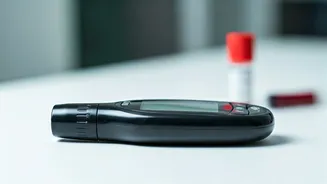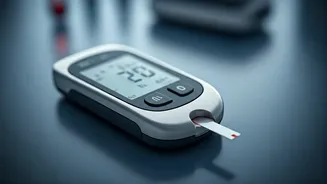Diabetes: An Overview
Diabetes, a prevalent health concern, impacts millions across India, and its effects extend beyond the usual symptoms. It's a metabolic disorder where
the body either doesn't produce enough insulin or can't effectively use the insulin it produces. Insulin, a hormone made by the pancreas, is essential for allowing glucose (sugar) from food to enter cells to produce energy. When glucose builds up in the blood instead of going into cells, it can lead to various complications. Prolonged high blood sugar levels can damage blood vessels, potentially affecting the health of various body parts. Understanding this foundational aspect is the first step toward managing the disease.
Nail Changes and Diabetes
Diabetes can significantly influence the health of your nails. One common change is the thickening of toenails. This thickening can make the nails harder to trim, increasing the risk of ingrown toenails and infections. Another sign is discoloration, where nails may appear yellow or brown. This change can be caused by fungal infections, which are more common in people with diabetes. The impaired circulation, a common consequence of diabetes, can also slow down nail growth and recovery from minor injuries. Brittle nails, prone to cracking, are another manifestation. Effective nail care, including regular trimming and cleaning, is essential in mitigating these risks.
Foot Health and Diabetes
Foot health becomes paramount when you have diabetes. Elevated blood sugar levels can lead to nerve damage (neuropathy), causing loss of sensation in the feet. This makes it difficult to feel cuts, blisters, or sores, which may quickly become infected. Poor circulation, another consequence of diabetes, makes healing more difficult and increases the risk of ulcers and infections. Diabetic foot ulcers are a common concern, often starting as minor wounds that worsen due to delayed healing and nerve damage. Regular foot checks, including visual inspections and sensory tests, are essential. Wearing proper footwear that fits well and protects the feet is crucial to preventing complications.
Preventative Measures
Several preventative measures can help you manage the impact of diabetes on your nails and feet. Regular foot examinations are essential. You should inspect your feet daily for any cuts, blisters, redness, or swelling. Consult a podiatrist regularly for professional foot care. Keep your feet clean and dry, washing them daily with warm water and mild soap. Avoid soaking your feet for extended periods, as this can dry out the skin. Trim your toenails straight across to prevent ingrown nails. Always wear well-fitting shoes and socks to protect your feet from injury. Control your blood sugar levels to minimize the risk of complications.
Seeking Professional Help
Knowing when to seek professional help is also essential. If you notice any changes in your feet or nails, such as persistent pain, redness, swelling, or non-healing sores, consult your doctor or a podiatrist immediately. Early intervention is critical to prevent complications such as infections, ulcers, and, in severe cases, amputations. Following your doctor's recommendations for managing your diabetes, including medication, diet, and exercise, is crucial for maintaining your overall health. Regular checkups and proper foot care can make a significant difference in preventing or managing problems.














